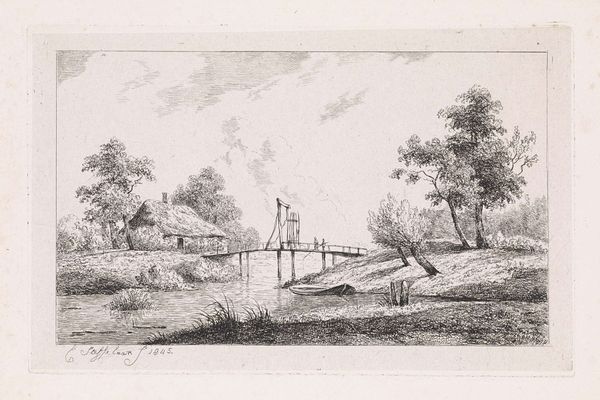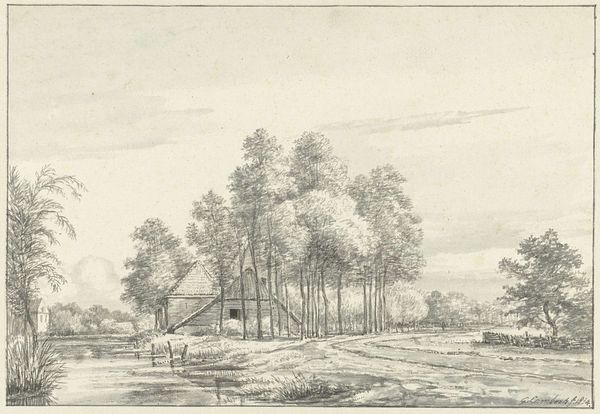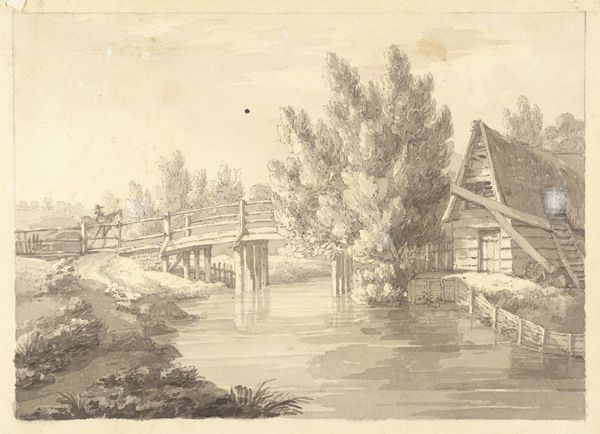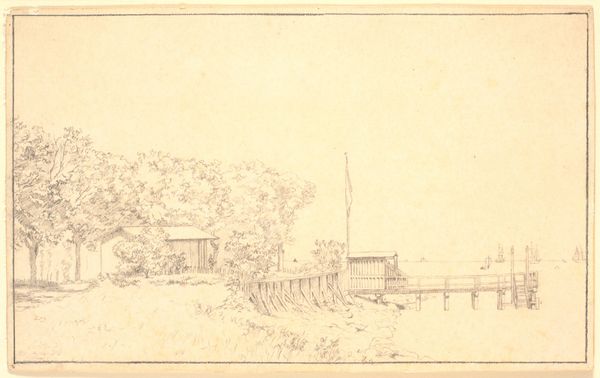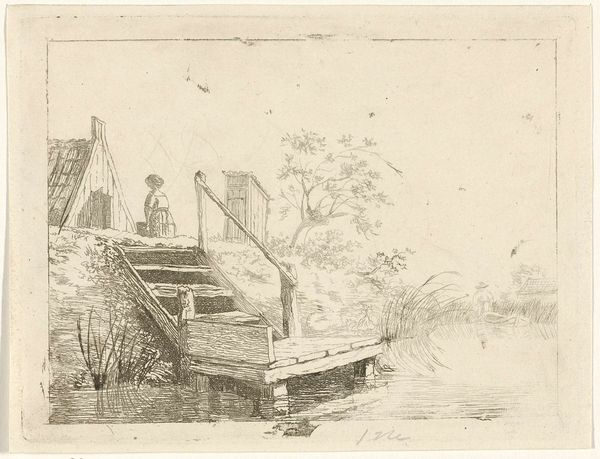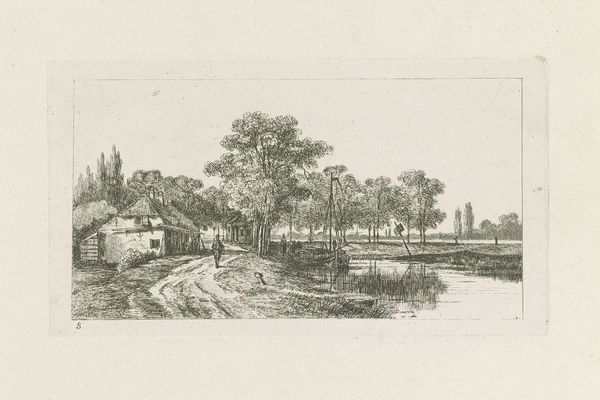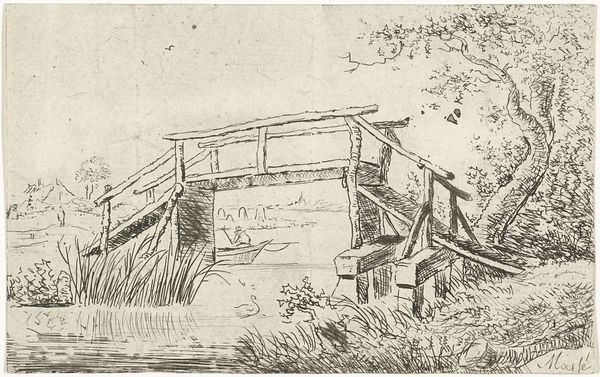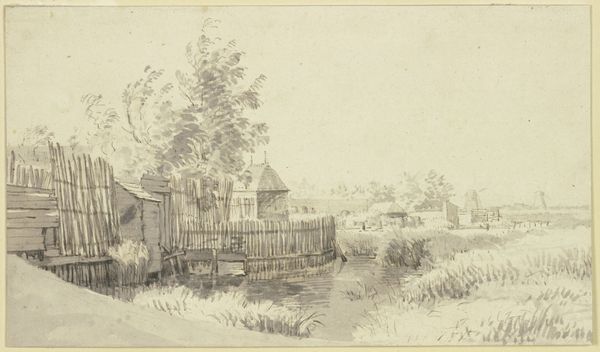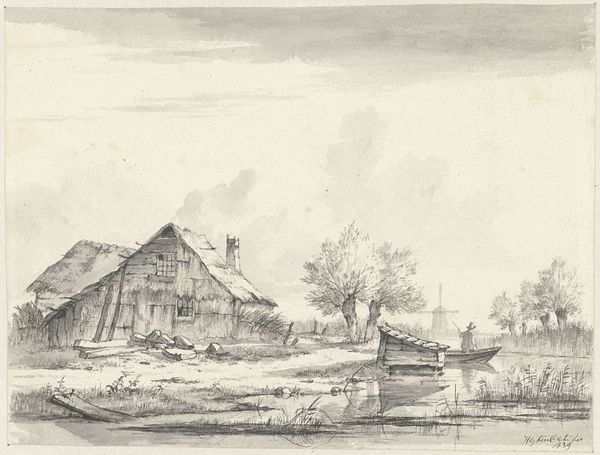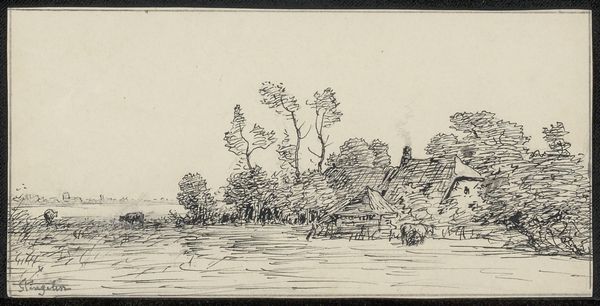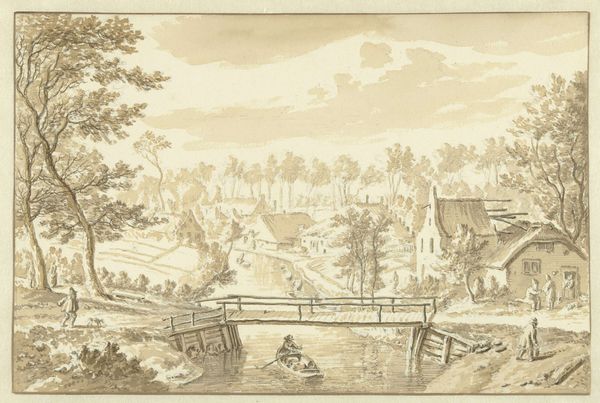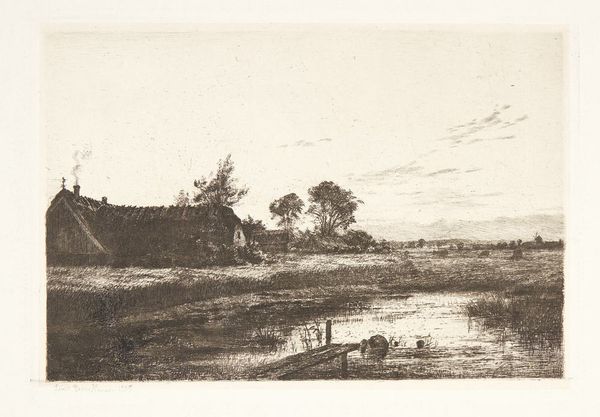
View of the Steenbergse Poort from the South-west, Bergen op Zoom Possibly 1671
0:00
0:00
drawing, ink
#
drawing
#
dutch-golden-age
#
landscape
#
ink
Dimensions: height 156 mm, width 198 mm
Copyright: Rijks Museum: Open Domain
Curator: Let's take a look at "View of the Steenbergse Poort from the South-west, Bergen op Zoom", a drawing possibly created around 1671 by Valentijn Klotz. It's a wonderful example of Dutch Golden Age landscape art, rendered in ink. Editor: It feels like a melancholic daydream. The monochrome palette emphasizes the rough texture of the wooden structures and the stillness of the water. Curator: Indeed. Klotz’s detailed portrayal provides a glimpse into 17th-century Dutch infrastructure, when waterways and fortifications were essential components of daily life and governance. Consider the socio-political implications of portraying a gateway that surely played a vital role in commerce and defense. Editor: And the means of construction, the heavy timbers, the evident labor! The drawing's beauty belies the intensive labor required for such works. What kind of labor was used to extract materials for this work of art? Curator: The waterways shaped this country and, thus, people's identities, providing both economic opportunities and territorial boundaries. Representations like these become imbued with concepts of power, accessibility, and who is permitted or denied access to a community's wealth and social networks. Editor: That reminds me, there’s also something inherently practical about it, though. Every stroke of ink feels dictated by the reality of constructing and maintaining these very real structures that demanded great effort to produce. Curator: That’s a beautiful observation about Dutch paintings that speaks volumes. In the hands of Valentijn Klotz, it makes you wonder how that impacted the identity of the Dutch people. Editor: It reminds us that even seemingly simple infrastructure holds complex material and social histories, and viewing such a picture can challenge how we think of labor.
Comments
No comments
Be the first to comment and join the conversation on the ultimate creative platform.

